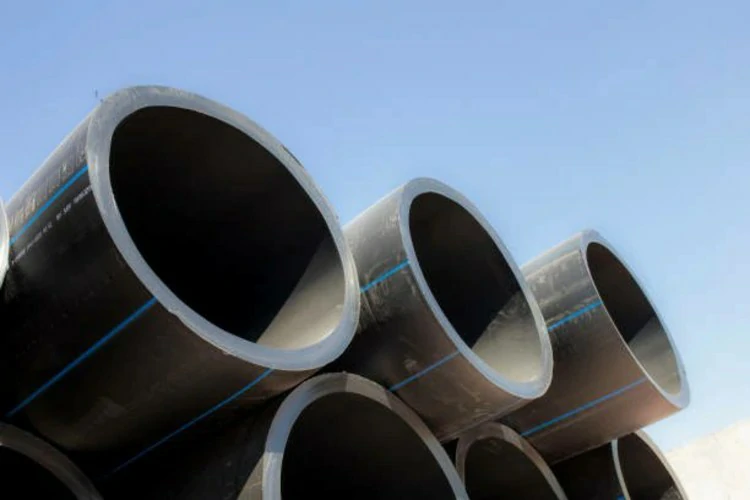Introduction
PE pipes and HDPE pipes both contain PE, but are they the same type of pipes? Are there any differences between PE pipes and HDPE pipes? In fact, HDPE pipes are a type of PE pipe, but there are still some distinctions between them. Let’s delve into the specific differences.
Differences between HDPE Pipes and Regular PE Pipes
When comparing HDPE pipes and PE pipes for strength, consider factors like manufacturing materials, thickness, and general quality. The strength of polyethylene pipes depends on the type of PE pipes, as highlighted earlier. HDPE pipes, with flexibility and the ability to bend into any shape, exhibit considerable durability. Properly connected, they demonstrate excellent impact resistance, making them robust.
Additionally, HDPE pipes have low thermal conductivity, maintaining normal operating temperatures even when influenced by external factors. They aid in controlling condensation, requiring adequate insulation for certain fluids. Unlike regular PE pipes, HDPE pipes resist rust and withstand internal pressure, ensuring reliable use. Regardless of environmental conditions, HDPE pipes maintain initial flow rates with minimal financial effort.
Differences in Material between HDPE Pipes and PE Pipes
Polyethylene (PE) pipes, a general term for thermoplastic pipes made from ethylene gas, come in various types. These include ultra-low density, low density, cross-linked, ultra-low molecular weight, high molecular weight, medium density, ultra-high molecular weight, chlorinated, and linear low density.
HDPE pipes, representing a type with higher density than basic pipes, are less flexible due to higher melting and impact points. During manufacturing, companies may add carbon black or other colors to resist UV radiation.
HDPE pipes with three bends, two bends, or a single bend can be obtained based on project design. The structure of received HDPE pipes varies based on slope direction and field length.
Understanding HDPE
HDPE is a high-crystallinity, non-polar thermoplastic resin. Non-toxic, tasteless, and odorless, HDPE is a white granular material with a melting point around 130℃ and a relative density of 0.941 to 0.960. It exhibits good heat and cold resistance, excellent chemical stability, high rigidity, toughness, and good mechanical strength. Dielectric properties and resistance to environmental stress cracking are also good. The melting temperature ranges from 120 to 160℃. For larger molecular materials, the recommended melting temperature range is between 200 and 250℃.
High-density polyethylene, a white powder granular product, is non-toxic, tasteless, with a density ranging from 0.940 to 0.976 g/cm3. It has a crystallinity of 80% to 90%, a softening point of 125 to 135℃, and can be used at temperatures up to 100℃. Hardness, tensile strength, and creep resistance are superior to low-density polyethylene. It has good abrasion resistance, electrical insulation, toughness, and cold resistance. However, its insulation is slightly inferior compared to low-density polyethylene. It exhibits good chemical stability, insolubility in organic solvents, and resistance to corrosion. The film has low permeability to water vapor and air, with low water absorption. Aging resistance is poor, and environmental cracking resistance is not as good as low-density polyethylene, necessitating additives for improvement.
Successful HDPE Irrigation System Application
A case study highlights the successful use of HDPE pipe systems in a North American home garden irrigation project. Achieving significant results, the HDPE materials provided an efficient solution for improving irrigation efficiency, reducing maintenance costs, and utilizing water resources fully.
Project Background: IFANPLUS’s HDPE pipe system was chosen for a North American home garden water supply project to address unique climate, soil, and water resource conditions.
Advantages of HDPE Pipe System: Corrosion resistance, UV resistance, lightweight, and flexibility made the HDPE pipe system widely applicable in the garden irrigation project. Its strong adaptability copes with complex and changing weather and soil conditions.
Irrigation System Design: Adopting the HDPE pipe system, an efficient irrigation system was designed based on local conditions, ensuring scientific water resource use and improving plant growth quality.
Construction Process: IFANPLUS’s HDPE pipe system installation is simple, meeting garden project flexibility requirements. The use of heat fusion connection technology ensures firm pipe connections. Efficient collaboration during construction ensures smooth project progress.
Project Results: IFANPLUS’s HDPE irrigation system achieved significant results. Plants received ample water supply, leading to excellent growth conditions. Compared to traditional systems, the HDPE pipe system reduced maintenance costs and improved overall irrigation efficiency.
Social Benefits: Adopting the HDPE irrigation system increased efficiency and reduced operating costs, providing convenient and efficient irrigation services for garden enthusiasts. This contributed to promoting local greening and beautification of the urban environment.
Conclusion: The successful HDPE irrigation system application in a North American home garden water supply project offers a feasible solution for similar greening projects. Its superior performance and adaptability make the HDPE pipe system an ideal choice, positively contributing to enhancing the effectiveness of greening projects.
In the high-end sector of the HDPE pipe industry, leading companies include JM Eagle, Wavin, ADS – Advanced Drainage Systems, IFANPLUS, etc.
Conclusion
Through this article, you should now have a clearer understanding of the differences between PE pipes and HDPE pipes. We hope this piece helps you distinguish between them, enabling informed and rational purchases of the pipe material you truly need.
Contact
IFAN, a professional manufacturer with 30 years of experience in producing plastic pipes, fittings, and valves in China, welcomes you. If interested in IFAN’s HDPE, valves, pipes, and fittings, feel free to contact us. IFAN provides various standard pipes to meet specific needs. Click the link below to learn more about IFAN’s diverse, high-quality, and cost-effective plastic pipes and fittings products.
We will reply your email or fax within 24 hours.
You can call us at any time if there is any question on our production.
For more information,pls visit our webside https://www.ifanplus.com/
Pls Mailto: [email protected]






